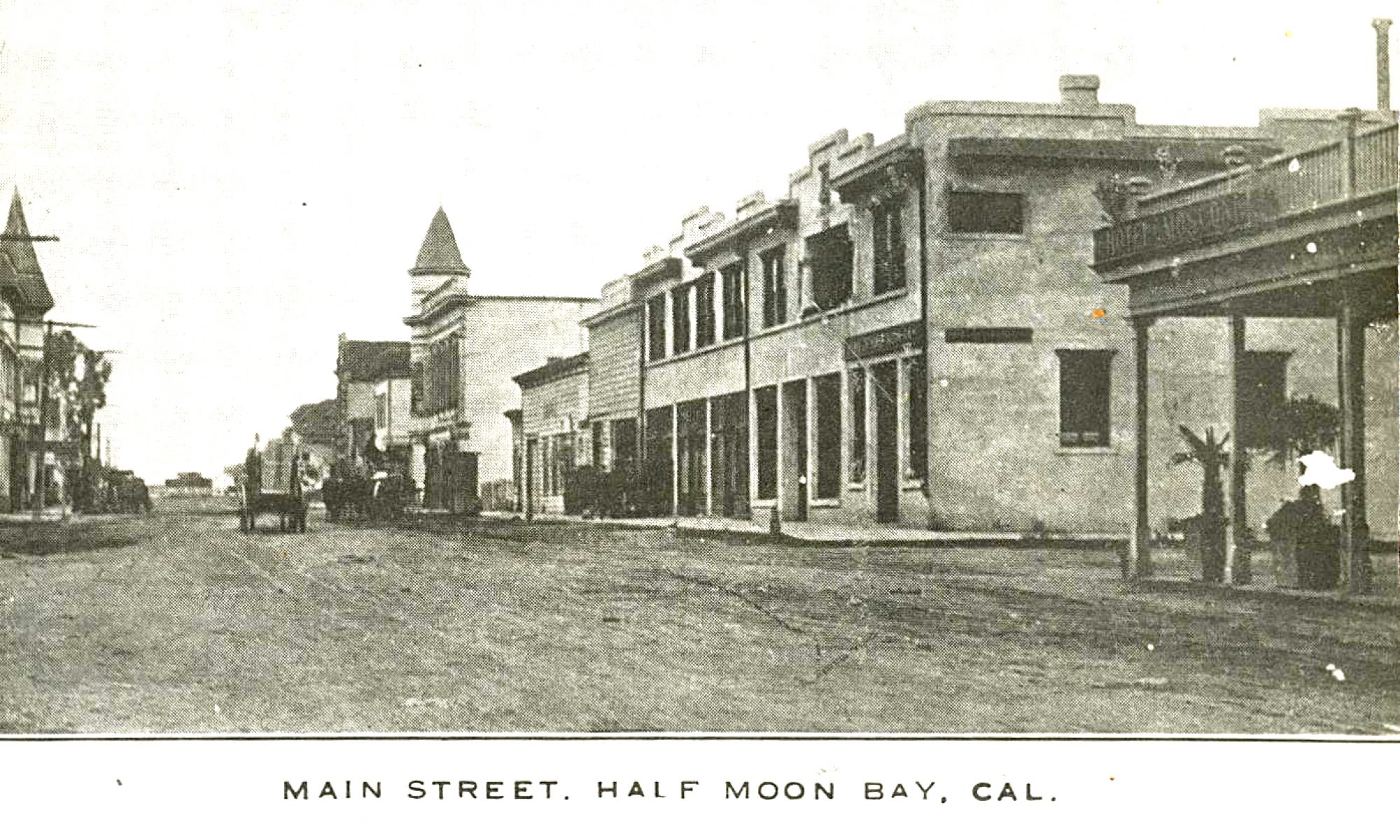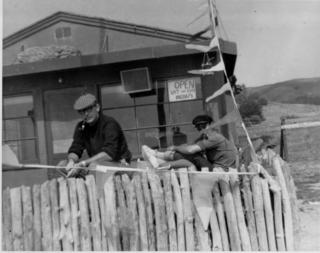“The idea of running a little joint appealed to me because, after all, the fantasy of every former beatnik or would-be beat type was an espresso shop,” Pete Douglas recalled. “Not that I had that directly in mind–but that was the fantasy, to drop-out and run your own little joint…”
Pete told me that “the stereotype of the laid-back beat was to have his coffee shop with cards, poetry books, chess, etc.”
In 1959 Mirada Road, sometimes called “the strip”, still retained a flavor from rumrunning days when the Coastside was “wide open.” The once stunning Palace Miramar Hotel stood brooding at the southern end of the road–while at the northern end the Ocean Beach Tavern (the present-day Miramar Beach Inn) was a roadhouse with official Prohibition era bona fides.
In the middle of the road stood Douglas’ tiny coffee shop. It had once been home to the notorious Drift Inn Cafe, where, Pete said, the bartendress often passed out dead drunk and kept an oak club handy so she could bonk undisciplined customers on the head.
…To be continued…






